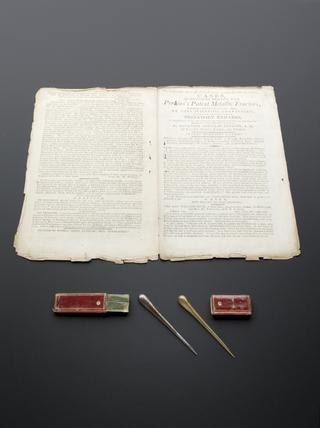
Self-propelled three-wheeled ‘invalid carriage’
- Made:
- 1920-1950 in United Kingdom

Self-propelled three-wheeled ‘invalid carriage’, lever operated with right-hand steering and breaking mechanisms and wooden seat structure, missing its padding. Maker unknown but probably used at the post-First World War rehabilitation ‘Village Centre’ at Enham Alamein, Hampshire, England, c1920-1950.
A number of designs have been developed that allowed users of wheelchairs, and what used to be called invalid carriages, to physically propel themselves independently rather than having to rely on others. This simple carriage moves via the alternate back and forth motions of two hand-held levers, placed either side of the wooden seat. This turns the two back wheels, while a steering mechanism and break are built into the right-hand lever and operated through the smaller front wheel.
A handwritten label attached to the body of the carriage suggests that it was once at the ‘Village Centre’ at Enham Alamein in Hampshire, England. After the First World War the village, then known simply as Enham, was one of the first sites designated as a centre for the rehabilitation of disabled veterans. These included amputees and those whose experiences had left them in poor mental health. Originally funded by King George V, it became a focus for the care of veterans and their retraining into trades such as upholstery, basketry and gardening. Such work continued in the aftermath of the Second World War and a significant intake of those wounded in the North Africa campaign led to the village being renamed Enham Alamein.
Details
- Category:
- Therapeutics
- Object Number:
- 2018-461
- Materials:
- wood (unidentified), rubber (unidentified), iron, metal (unknown) and paper (fibre product)
- Measurements:
-
overall: 1020 mm x 715 mm x 1820 mm,
- type:
- invalid carriage
- credit:
- Jane and Michael Lawrence


